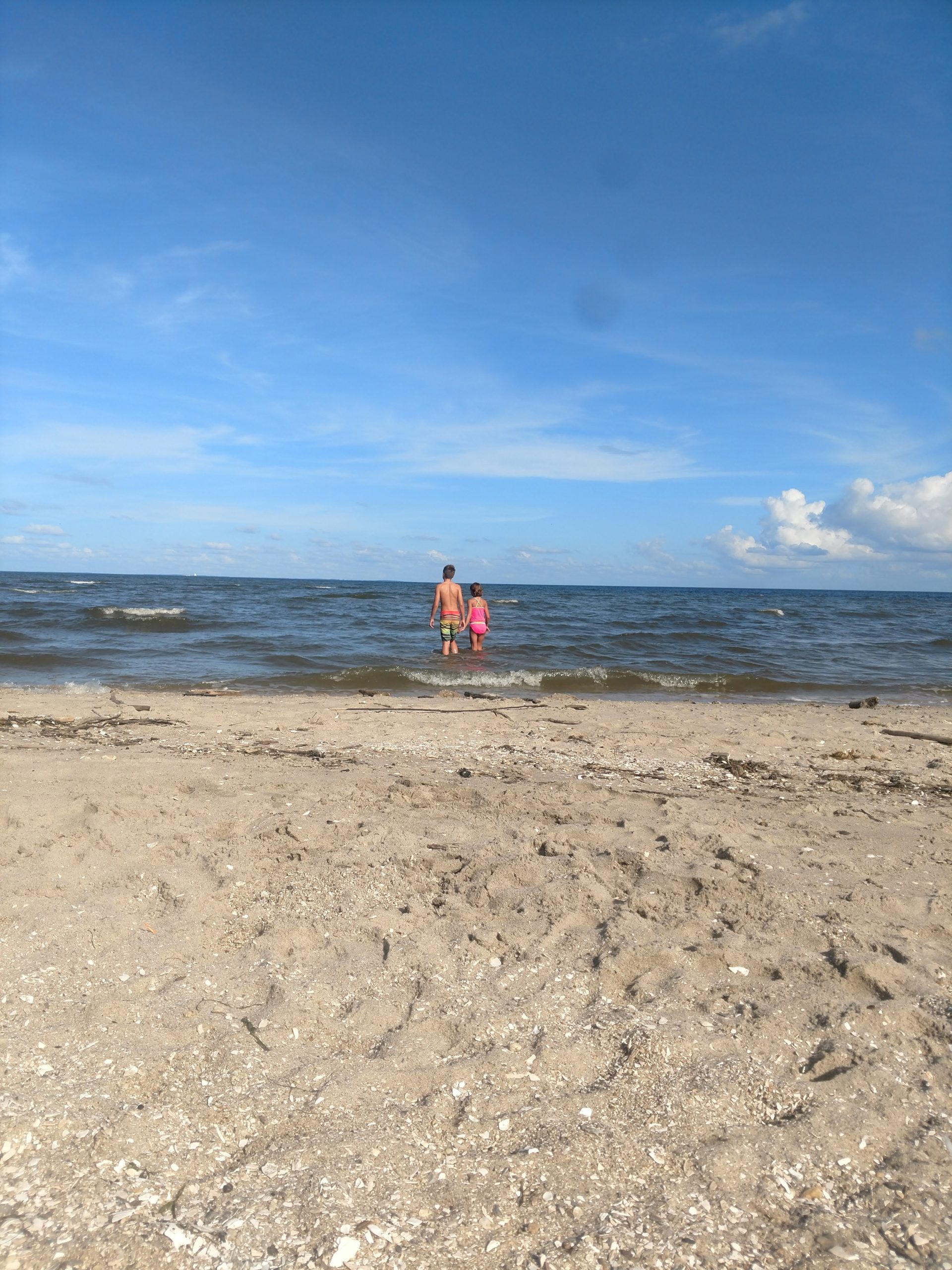Maryland’s Other Beach Destination

By Meg Walburn Viviano
Ah, beach season! We know it all too well: each weekend in the summer, vacationers from Pennsylvania, Baltimore, D.C., and everywhere in between load their vehicles to the gills with coolers, bikes, suitcases, beach umbrellas and chairs, fishing gear and swimsuits. They crawl through five-mile backups with the rest of the merry throng down the Eastern Shore, all clamoring to reach Maryland’s coastal beaches.
I sometimes wonder what it was like for Marylanders to go on vacation 75 or 100 years ago. What did summer trips look like when there were no SUVs with roof racks on which to strap extensive beach gear? How did one get to the beach before there was a Bay Bridge?
In many cases, folks settled for closer, Chesapeake Bay beaches that were easier to reach than Ocean City’s Atlantic shore. Passenger steamboats made trips up, down and across the Bay taking vacationers to the Eastern Shore, and some railroad lines led directly to the western shore beaches that lined Chesapeake Country from Anne Arundel to Calvert counties.
Instead of salty ocean waves crashing against the sand, vacationers enjoyed the brackish Chesapeake Bay lapping against the shore. But a beach is a beach, and these western shore beaches were wildly popular.
Entire towns were built up around these beach destinations where the railway stopped. Trains full of families from Baltimore and Washington arrived weekend after weekend. Business owners seized the opportunities presented by the steady stream of tourists, building even more attractions to meet demand.
Calvert County’s “twin beaches”—Chesapeake Beach and North Beach—were established just in that way. Vacation cottages were inhabited by city folks looking to enjoy the water and sand (and do a bit of gambling). Amusement park rides, music and dancing provided thrills and the town boardwalks were just right for a stroll.
That golden age of the Bayfront beach destinations was fleeting, as widespread car travel replaced railroads and a new Bay Bridge replaced steamboats. The Chesapeake Beach resort’s heyday only lasted from 1900 to 1935, when the train stopped running there.
But as you’ll read in this week’s issue of CBM Bay Weekly, more recent efforts have brought the twin beaches back to being prime getaway spots. Today they’re family-friendly, charming, walkable small towns.
This latest installment of our Weekends on the Water series is a go-to guide for visiting North Beach and Chesapeake Beach, with input from those who know it best. And be sure to look back with us at the impact of visionary town leader, the late Gerald Donovan, who helped the area flourish.
While you can’t hop on a train and be let off directly at the sandy shores of the Chesapeake anymore, you can still enjoy the charm of a Maryland beach vacation without having to cross the Bay. Flip through these pages and start planning your trip!
